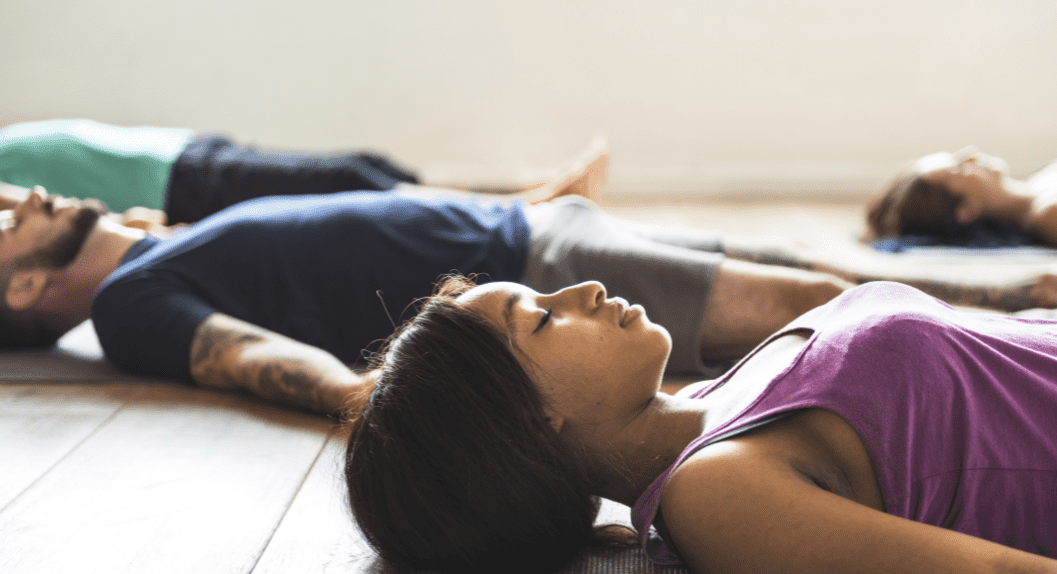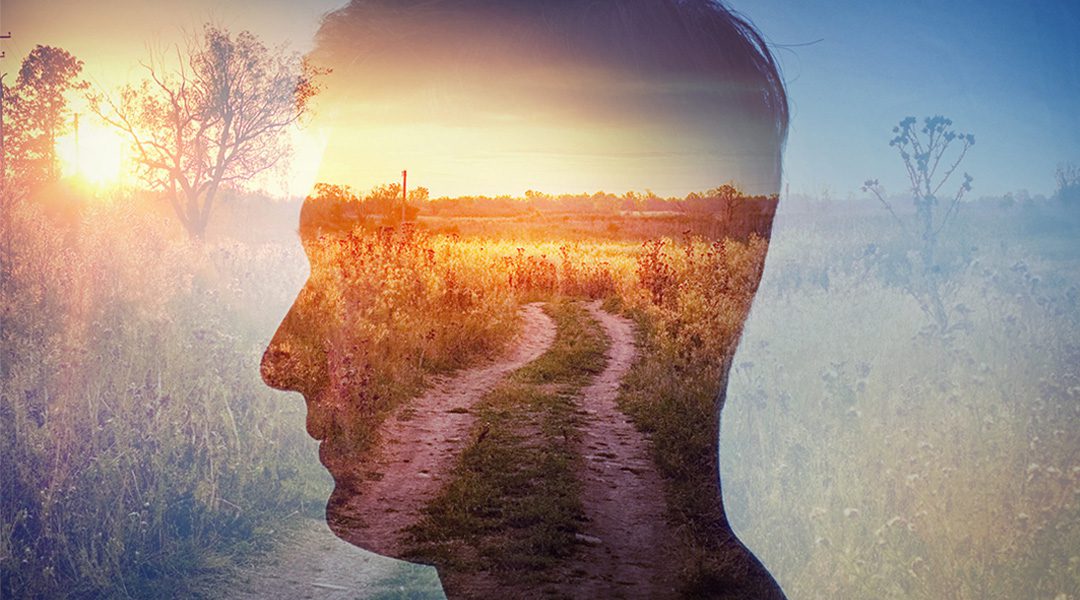Sometimes injury, stress, or the day’s wear can leave us exhausted and unwilling to step onto the mat. In these times, the healing qualities of Restorative Yoga may be the perfect method for your practice. In Restorative Yoga, the body is placed in supported asanas (poses) with the use of props. Rather than doing the pose, you release into it. In this article, you’ll learn from experienced Integral Yoga instructor and trainer, Satya Greenstone, why everyone can benefit from Restorative Yoga.
“A lot of people think that Restorative Yoga is just for old or sick people, but that’s not really true. It’s for everyone.”
-Satya Greenstone
Restorative Yoga is immensely beneficial for those with anxiety, injury, trauma, or experiencing an especially emotional time in their life. However, it’s main focus is on reducing stress, something that all of us work with on a daily basis. From the moment you walk into an Integral Yoga Restorative class, you notice the difference. The environment is designed intentionally to create a stress-free and protected space, and all props, including mats, pillows, blocks and blankets are prearranged. Clearly, it’s not your typical Yoga class and upon your arrival, there’s nothing to do. In fact, not doing is exactly the point.
In a Restorative Yoga class there is nothing to prove and no position to perfect. The props support your body so you can remain in poses for extended periods of time. As a result, you are able to more deeply relax and release and that’s when the magic happens. Within this safe environment, the prana-shakti, as Satya calls it, is able to do her job.
“Prana-shakti, or cosmic energy, manifests as the innate, energetic intelligence of your body. One of her primary jobs is to keep your system balanced.”
However, as many of us are aware, this balance can be difficult to maintain in our present day society. Inevitably, life gets very disruptive. Due to a culture that is externally oriented, our energies and seeking are often outside of us, rather then within. Restorative Yoga is an intentional process of drawing inwards and stilling the mind and body. This practice can help regain balance and remove subtle energetic blockages, which are experienced physically, emotionally and energetically.
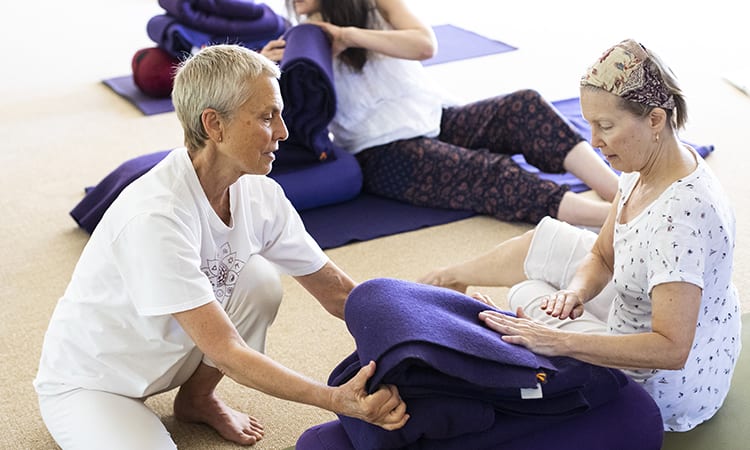
Many studios offer Restorative Yoga as a supplement to another practice like Gentle Yoga, while others offer one Restorative pose at the end of class. However, at Yogaville, Restorative Yoga incorporates all compontents of the regular Hatha Yoga class, including chanting, pranyama, asanas and meditation to make it a complete ninety minute practice. This is the tradition of Integral Yoga and Yogaville’s founder; Sri Swami Satchidananda. Due to his influence and vision, every Yoga class at the ashram is structured as a complete spiritual practice with the ultimate goal of experiencing the peace within.
What to Expect in a Restorative Yoga Class
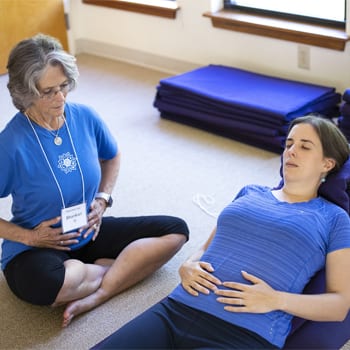
The final pose is a supported Savasana or relaxation pose which allows the body to assimilate the benefits of the practice. The class concludes with gentle deep breathing, peace chants, and meditation.
During the weekend restorative workshop, Satya also offers a restorative series to enhance the breath capacity. In this sequence, she incorporates postures that relax the diaphragm and deepen the breath. This is particularly effective for stress reduction and can aid those who experience, for example, anxiety attacks, asthma or chronic shallow breathing. The supported bridge pose aids the upper lung and a supported sitting bend helps lengthen the exhale. After the full sequence of poses with guided breath awareness, the class concludes with a relaxation pose and a period of meditation.
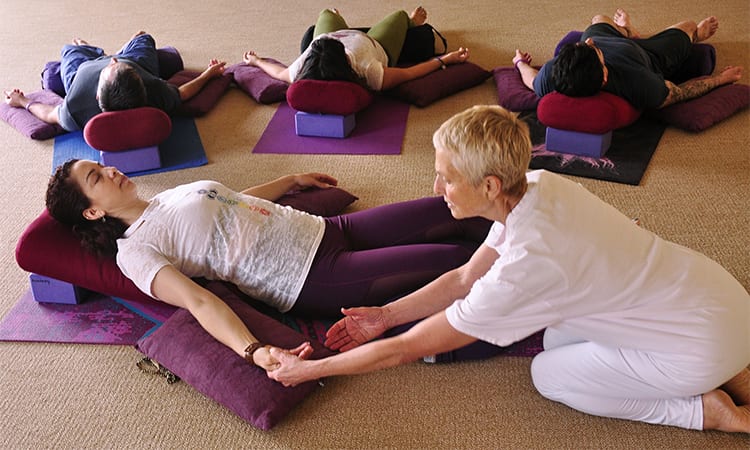
“Not the body, not the mind, Immortal soul I am,” sings Master Sivananda. This is easy to say, but much harder to experience.
On a day to day basis, we are often completely ruled by our body and mind, says Satya. With Restorative Yoga we can begin to still and relax the body which calms the breath and in turn, the mind. From this quiet place we are able to truly get in touch with our own energy, life force, intuition, and peace. Fortunately, the more you practice Restorative poses, the deeper you go. But you have to make the time, then just relax, and enjoy the Bliss!

